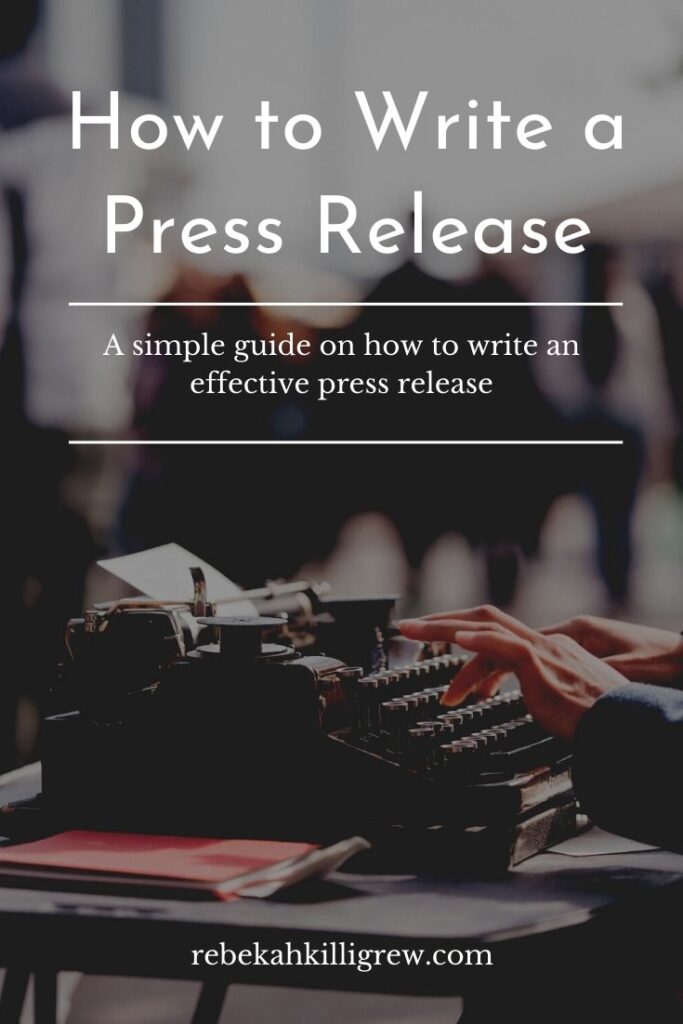A simple guide on how to write an effective press release
As a small business, brand or maker, getting your product or service in front of the relevant editors and journalists can be a game-changer; booking editorial coverage (both in digital and print) is a great way of gaining visibility and making new connections.
One of the most traditional ways of pitching for this type of coverage is by sending out a press release. This may sound intimidating but it’s ultimately about communicating information in an effective and clear manner.
In my current role as a magazine editor, I receive hundreds of press releases via email every week and, though it’s extremely time-consuming, I have mastered the art of quickly scanning the email to see if it’s relevant and of interest to the readers of the proposed magazine.

Press releases that have been written in a simple and clear format make my job so much easier, and those that are too complicated and/or visually difficult to follow, often get discarded or forgotten about. With that in mind, here are my top tips for writing a press release.
1) CLEAR SUBJECT TITLE
Whilst it’s always good to be creative and unique, when it comes to the subject title in your email, keep it clear and to the point. The title should be a good indicator as to what the press release is about; if you over complicate it or make it too long, it can look like spam.
2) THE 5 Ws
If you don’t know about ‘The 5 Ws’, get to know:
- Who
- What
- When
- Where
- Why
Ensure that these ‘Ws’ are covered in your press release.
3) FIRST PARAGRAPH & LENGTH
Ensure that whatever the press release is about is fully summarised in the first paragraph, ideally including ‘The 5 Ws’. To give yourself the best chance of holding someone’s attention, you want to make sure that the person that opened your email knows exactly what it’s about as soon as they start reading.
Ideally, I think that a press release should be around 300-400 words, and in my opinion, no more than 500 words – anything more than this starts to become too time-consuming to read and you may lose the interest of the person reading it.
4) IMAGERY
Include relevant images that will stand out and catch the readers’ eye. If it’s unclear what an image is, include a caption to go with it.
Try to avoid sending too many hi-res images in the initial email, just submit a small selection of the best ones – my computer has crashed before from being sent too many images, and I never opened the email again. If you need to send a lot of imagery, just attach the 2 best images and then add a dropbox link to the rest.
5) ABOUT YOU
Include a clearly marked “About” section so if someone is new to you or your brand they can clearly see what you do without having to read the whole press release; they may end up keeping you in mind for something else purely based on what you do.
6) THE FINER DETAILS
Include clear and correct finer details such as pricing, contact information, launch dates etc. The easier and clearer you can make it for the editor, the easier it is for them to imagine you in their publication. It also shows that you have made the effort – a sloppy press release will get discarded!
TOP TIP!
Before you send a press release ensure that you research the publication and their house style, and if need be, tweak the release to suit. I receive so many releases and/or pitches that are not relevant to the publications that I work on, which can take up precious work time and also gives the impression that the person sending it hasn’t done their research.
Notes from an Editor
Here are some additional notes from me including some examples from my experience working as a magazine editor :
- Magazines often work 4 months ahead, so bare this in mind when pitching for seasonal stories – Christmas stories can often be an even longer lead time.
- Don’t be disheartened if you don’t hear back, I often save emails of interest for future reference or forward them on to colleagues.
- Don’t be afraid to chase up! Editors and journalists get sent so many press releases so a gentle (and polite!) chase up is absolutely fine.
- Add a personal touch by customising a press release if you are sending it directly to a specific editor or journalist.
Pin For Later:

Photo credits: Patrick Fore/Milkovi
